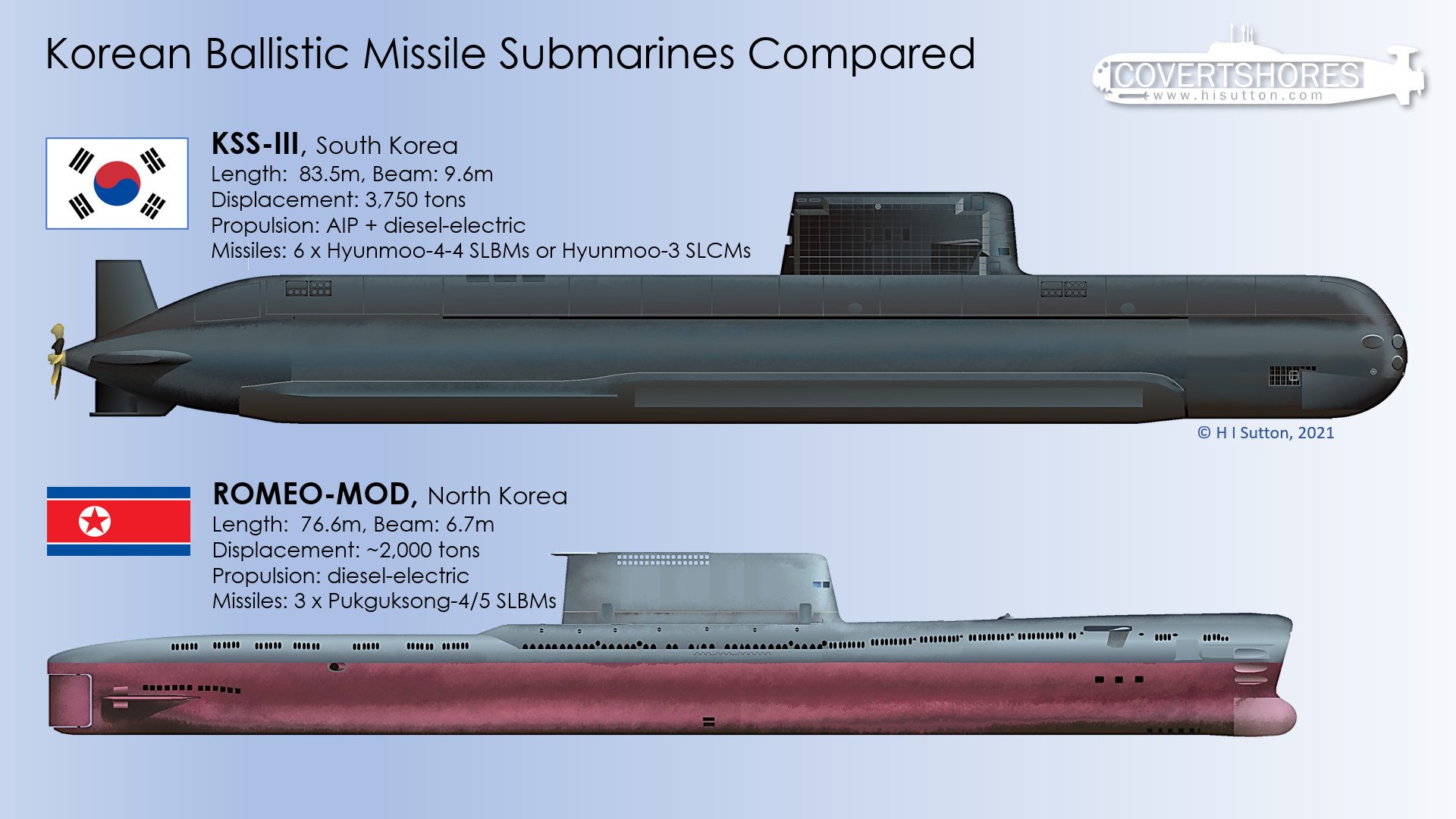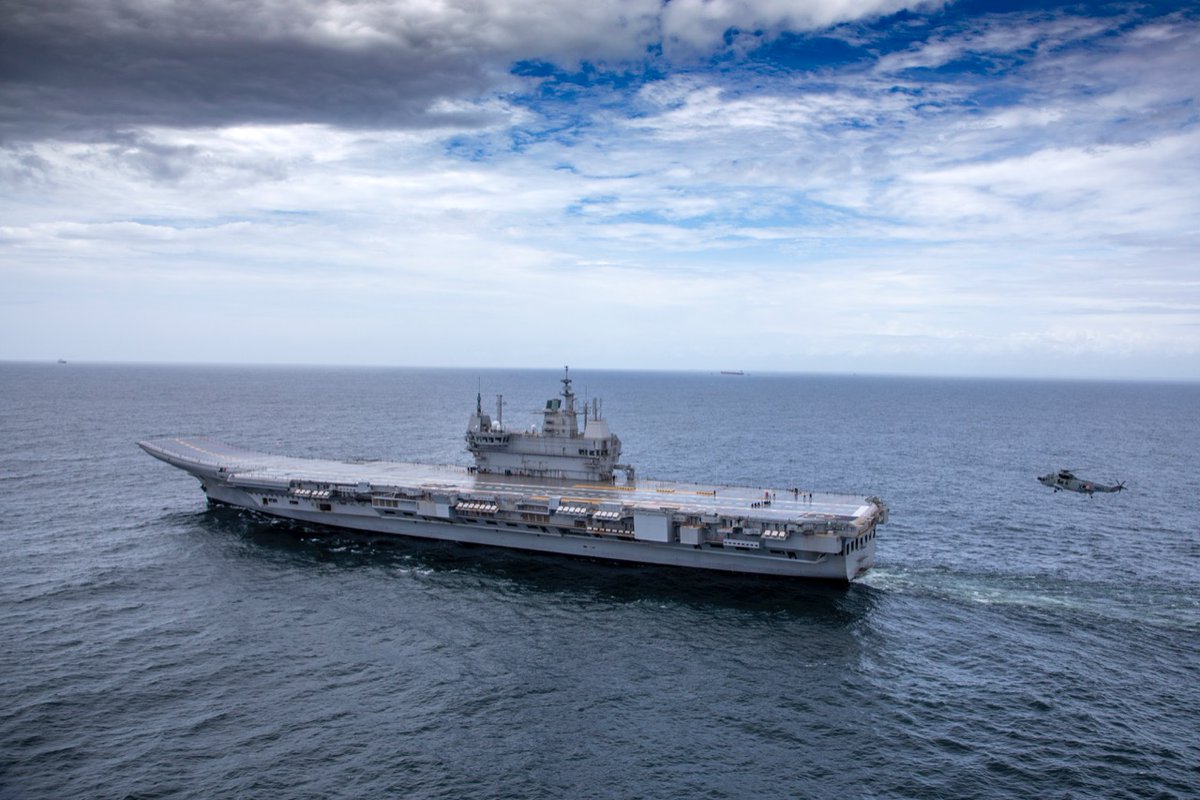South Korea has officially abandoned its CVX aircraft carrier program for the following fiscal year, finally putting all speculations to rest. Interestingly, this comes when the Indian Navy, another Asian maritime power, commissions its first indigenously developed aircraft carrier ‘Vikrant.’
The CVX project, part of South Korea’s aspirations to construct its first aircraft carrier, has not received funding as part of the country’s proposed 2023 defense budget. The proposed budget was submitted to the National Assembly on September 2, 2022.
For its defense spending in 2023, the government has asked for a 4.6% increase from 2022, putting the total value at 57.12 trillion won, or approximately $42.4 billion. Of this, 17.9 trillion, or roughly $13.3 billion, would be set aside for new purchase programs, with the remaining money going toward upkeep and operations.
The axing of the ambitious program could be attributed to the change in strategy owing to the exacerbated threat from an aggressive North Korea. However, some quarters believe it is more to do with the expanding scope and cost of the carrier design that the budget possibly could not accommodate.

The development, however, has cast a shadow on the operation of carrier-capable F-35B fighter jets. In July, South Korea’s decision to purchase 20 new F-35A Block 4 Lightning II stealth fighters first raised questions about the future of the South Korean aircraft program.
The CVX Program has remained controversial since it was revealed in the Mid-Term Defense Plan (MTDP) 2021–2025, published in 2020. The program failed to receive funding even in 2021 despite a memorandum of agreement between Korean Aerospace Industries and Hyundai Heavy Industries to design and develop CVX.
While the CVX has been an embodiment of South Korea’s Blue Water Navy ambitions, it has failed to take off with security priorities and change in guard.
The axing of CVX, however, comes as a boon to South Korea’s submarine fleet, which is set to get more funding. According to reports, Seoul’s fast-developing submarine fleet is slated to receive 5.3 trillion won or around $3.9 billion in funding, which would be an increase of 9.4% over that of 2022’s.
Submarine or Aircraft Carrier?
The budget reflects the aims of the new administration led by President Yoon Suk-yeol, which has stressed the “three-axis system” while downplaying the significance of CVX.
With tensions constantly rising, North Korean leader Kim Jong Un warned in July this year that he was ready to use his nuclear weapons in potential military conflicts with the United States and South Korea. The tensions have only escalated since the US and South Korea conducted massive military drills in the region this last month.
The three-axis system backed by Yeol aims to create a more comprehensive defensive system that can react more effectively to a potential nuclear assault from North Korea.
The kill chain component is the first and is designed to launch a preemptive strike against Pyongyang’s nuclear and missile facilities to safeguard Seoul if deemed necessary.
Second, the Korea Air and Missile Defense system is designed to shoot down any North Korean ballistic missiles launched at the South.
Third, there is the Korea Massive Punishment and Retaliation program (KMPR), also known as Overwhelming Response, which aims to create methods for employing conventional weapons in retaliation against North Korea should Pyongyang launch an attack.

The ballistic missile-carrying KSS-III submarines, which will get funding of 248.6 billion won (about $ 185 million) for the upcoming year, are an essential part of the third axis of the three-axis system known as “Korean Massive Punishment and Retaliation (KMPR).”
KSS-submarine-launched III’s ballistic missiles (SLBM) will strike North Korean command and control centers and bunkers during a battle with North Korea. Due to the KSS-III submarines’ greater range and endurance, they may also be tasked with shadowing North Korea’s SLBM-capable Sinpo-class submarines in addition to their KMPR duties.
The lead ship of KSS-III Batch I, ROKS Dosan Ahn Changho, made its initial deployment earlier this month.
One major factor behind the abandonment of CVS is the exorbitant cost of constructing the vessel. It was previously estimated that the new South Korean carrier would cost roughly $1.83 billion, which looks incredibly optimistic.
The cost of the F-35Bs would need to be added to this as well. It was anticipated that Seoul would have to spend a whopping $2.7 billion on purchasing 20 F-35Bs.
It is an interesting coincidence that South Korea’s carrier exclusive proposal will be sent to the Assembly the same day another Asian powerhouse, India, commissioned its domestically built aircraft carrier amid much fanfare. However, it also becomes pertinent to mention that the Indian Navy tilts more towards submarines than aircraft carriers.
Indian Navy’s Preference For Submarines
The debate regarding the Indian Navy (IN) obtaining a third carrier—one for deployment on either seaboard and one in reserve—has been reignited once again with the commissioning of the 43,000-ton Indigenous Aircraft Carrier-1 (IAC-1) INS Vikrant.
These discussions have been heavily influenced in military circles over the years not only due to the astronomical cost of the desired Vikrant-class carrier but also because of its general employability in a setting of developing anti-access/area denial (A2/AD) capability via long-range ballistic and cruise missiles, which China has successfully honed.
At the Combined Commanders Conference 2021, the Indian Navy informed the nation’s national security planners that the project to construct the nuclear-powered attack submarines should take precedence over the project to construct a third aircraft carrier, also known as indigenous aircraft carrier 2.

To compete with the People’s Liberation Army Navy (PLAN) and safeguard its position in the Indian Ocean, the Indian Navy told the Indian government in March 2021 that the introduction of nuclear submarines would take precedence over a third heavy aircraft carrier.
At the time, it was argued that nuclear-powered submarines could patrol the Indo-Pacific region without ever coming to the surface and avoid detection on equatorial and high seas.
Such submarines are currently in use by China. India is also pursuing the P-75I project to acquire six diesel-electric attack submarines to expand its fleet. The P-75I would be a successor to the Indian Navy’s P-75 Scorpene-class submarines.
However, many within the service and retired personnel believe that aircraft carriers are as crucial as submarines, if not more.
According to Former Vice Admiral in the Indian Navy Shekhar Sinha, “Naval assets aren’t either or. What submarines can do, aircraft carrier assets cannot. Similarly, what aircraft carriers can do, submarines can’t. There are well-balanced five dimensions of maritime warfare. A carrier battle group is centered on air power at sea, which provides Air Defense to the entire battle group, which moves in the direction of the threat.
The veteran further explained, “This group consists of destroyers frigates maritime patrol aircraft ASW helicopters fighter aircraft and submarines while exercising sea control over specified area for a specific timeframe.
We mistake looking at an aircraft carrier as a lonely ship floating in the sea. Aircraft Carrier Operations at sea are a very specialized warfare area, and many fighting instructions are laid down to be followed.”
With the Vikrant Carrier now commissioned, the carrier vs. submarine debate in India is set to become even more pronounced. However, as far as South Korea is concerned: the debate is over; it is submarines over the CVX Carrier.
- Contact the author at sakshi.tiwari9555@gmail.com
- Follow EurAsian Times on Google News




